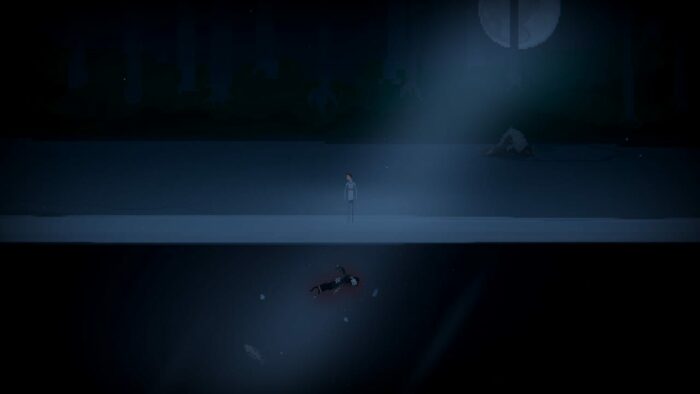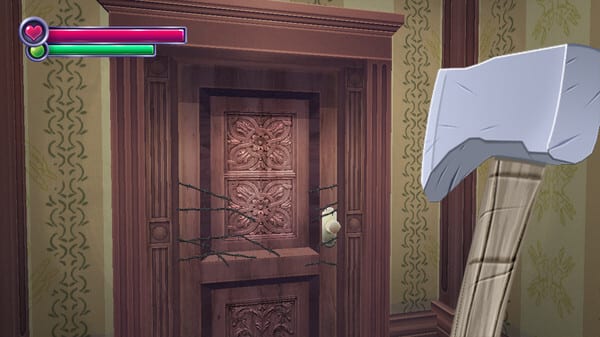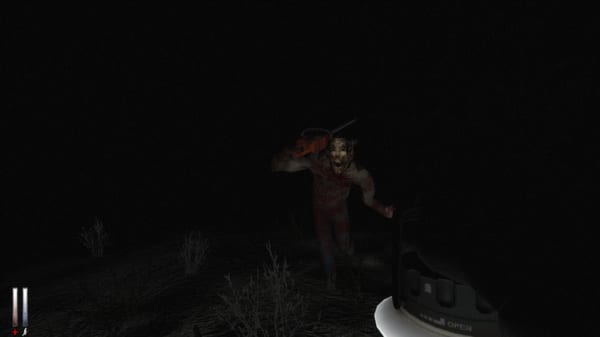The fall is upon us. The air is crisper, the days are shorter, and Halloween is on the horizon. This week, while Johnny debates which games he plans to finish (and to what degree), Sean and Collin talk about some spooky horror games, or Spookies (not to be confused with the 1986 movie of the same name). It’s time for another edition of We’re Just Playing…
Johnny Malloy
I’m all over the place lately with games. Lookit, my ADD gets me going in ten different directions on a good day, so when it comes to gaming I have a hard time seeing a game through to the end. On top of that, what exactly constitutes the end of a gaming experience?
Some people play a game until they beat it. Others play games until they complete them. I’m somewhere in the middle. I will usually play a game (providing it holds my interest) through to its natural conclusion, at which point I decide if the experience is enjoyable enough to continue on.
Did completing the game give me an incentive to keep going? Most modern games unlock harder difficulty levels, or post game content. A lot of games feature multiple endings, meaning you might need to replay the game again meeting certain criteria to get the “best” ending.
There are very few games I’ve Platinum-ed on the PS4. Games such as Borderlands 2, Skyrim, and The Binding of Isaac were a huge part of my gaming life, and so getting every achievement in those games meant something to me. I’ve given several hundred hours of my life to those games, and most of that time was well spent.
However, even I got to a point where I was mindlessly looting and shooting my way through another campaign as one of the Vault Hunters, wondering if I was having any fun. I eventually put down these games and moved on to something else. As much as I like the idea of completing a game, I don’t think it makes much sense to continue to play a game past the point of enjoyment.
Currently, I’m playing a few games, as I am wont to do. Will I beat these games? Will I complete them? Or will I abandon them? Here is my best guess.
Tony Hawk’s Pro Skater 1 + 2
At the time of this writing, I have unlocked all the levels in THPS 1 and all but the final level in 2. Back when these games were on the PSX, I managed to unlock all the levels, and (I believe) complete all the level objectives.
I’m doing pretty well in the game and I’m enjoying the hell out of it. As I said recently, it’s a stellar remake in almost every way. That being said, there are a ton of additional challenges that I will never accomplish. As much as I am a Tony Hawk fan, I am not a Tony Hawk expert.
For me, I will probably put down this game when I accomplish all the level specific challenges, get the gold medal in all the comps, and complete the free roam level mode. I don’t need to find all the gaps in each level. It’s hard enough to even know where they are. You basically need to consult YouTube just to know how to do them. Not to mention you have to do several of them in a very specific way for the game to consider it completed (and the game gives you no on-screen indication you’ve tricked over a new gap, just that you’ve found a gap).
I will probably dive into the challenges a little, see what I can accomplish, and walk away when things get unreasonably frustrating.
Verdict: Beat, but not Complete.
Spelunky 2
Good lord, I am awful at this game. I’ve made it to level 3-1 once. And I’ve unlocked a short cut that allows me to start at the end of world 1-4. Spelunky 2 is tough, yawl.
As far as games with randomly generated environments, the Spelunky games are the top of their class, up there with Isaac and Dead Cells. Also, like those games, the randomness is necessary. If you could just memorize things, these games would eventually lose their challenge. Instead, their challenge level is evergreen.
You learn in Spelunky 2 by dying. The first time a statue shoots you with an arrow you feel the game is being unfair; the twentieth time you know that’s on you. You eventually learn that those statues only shoot when something crosses in front of it. You learn that by tossing a rock, or jar, or say…your poor dog, will cause the statue to fire it’s one and only arrow. Then you can pass it without incident.
However, there are still other things that can murder you in the meantime. Moles can pop out of the ground if you aren’t paying attention to the ground. You could accidentally blow yourself up, or fall too far. A pile of bones can turn into a deadly skeleton. In later levels, blowing up an area with a pool of lava can cause it to overflow and contaminate other parts of the area. Everything wants you dead in Spelunky 2.
Nevertheless, I am invested in this game, and I will (later rather than sooner) beat it. When I first played Isaac I died nonstop. My losing streak was shameful, but I had the desire to get better, much like Rogue Legacy. Some rogue games just have that crack-like draw. The “one more time” factor that gets me immediately back into the action. Tony Hawk has it, and so does Spelunky 2. It’s just that in Pro Skater the worst that can happen to your character is you bail on the trick, whereas in Spelunky 2, you’ll probably get impaled (and forced to watch it as your character slowly slides down—and through—the spikes).
Verdict: Will Beat…someday. Never Complete.
Super Mario 35
I talked about this game last week, and it’s a fun little distraction. I’m beating the daily challenges with ease, and I usually last pretty long in battles, but the game still holds my interest.
Initially, you find yourself looping through the same few early levels and it can get a tad repetitive. Not to mention, in World 1-2, you can head to the warp zone and frequently go back to World 1-1 instead of playing World 1-3. It’s more advantageous to just play the easy levels over and over again.
As you go on, you unlock more levels from the classic Super Mario Bros. game, and the enemies other players send you get tougher. At first you are inundated with Goombas and Koopas, but as the game goes on Cheep Cheeps and even Bowser get sent to your screen.
The game is free for Nintendo Switch Online subscribers and it’s a fun concept even if there’s not a whole lot of meat on the bone. It’s the kind of game I’ll probably just stop playing at some point, without warning. It’s a limited run game, so it’s best not to get too attached anyway.
Verdict: Play until it no longer “brings me joy.”
Sean Coughlan
This week I played through Ellen—a 2D, indie horror game from Red Mount Media. The game tells the story of a young investigator named James who is tasked with uncovering the truth behind the brutal murder of the Smith family, and the whereabouts of their missing daughter, Ellen. Set in the fictional English town of White Hill, James enters the Smith’s mansion a year on from the grisly event, after locals report seeing the silhouette of a young girl in the windows of the abandoned building. Armed only with a torch and a notebook, James soon discovers that there are powerful evil forces at work in White Hill, and his investigation becomes a fight for survival.

Ellen uses a modern 2D pixel-art style that is surprisingly effective at creating an unsettling atmosphere. Lighting, shadows, and obstructions in the foreground, are all used to good effect to build tension and deliver the odd jump scare. Obviously, the sound and music play a big role too, and Ellen delivers in that department too—albeit in a slightly predictable fashion. Despite the minimalist character model, James is animated realistically, with long limbs that make his every action feel grounded—be it walking, opening a door, or hiding behind a wardrobe. It all adds up to an experience that allows you to feel immersed in the game’s story.
Sadly, the gameplay all too often breaks the immersion. At its heart, Ellen is most akin to a point-and-click puzzle game—James must pick up items around the mansion to use elsewhere to progress. Progression is entirely linear, but with little signposting. As access to the mansion expands, the possible routes for aimless wandering increase, and all too often I found myself cluelessly lost. Puzzles are often obtuse and usually figured out by stumbling upon the solution rather than with logic. While the solution itself is normally straightforward, the execution is anything but.
At one point, a deadly plant blocks your path. An empty bottle of weedkiller spray can be found nearby, implying that it needs to be refilled. In a shed you find vinegar, but you must backtrack to the kitchen to find the full weedkiller recipe which also needs salt, alcohol, and the use of a mixer—so far so good.
After picking up the salt however, you then sit down for soup, interact with a ghost, go upstairs, find a cassette player, hide from a knife-wielding monster, find a toy-car, break through a dresser, fall into the basement and hurt your leg. You then need to crawl around searching for a med-kit before going outside, then find a crowbar to open a locked gate, row a boat to a lighthouse, find fuel for a generator, ride an elevator to the top, watch a cutscene and then wake up back in the kitchen. Finally, you can access the previously locked room containing the mixer which will fail to work until you put the ingredients in a specific (unspecified) order. It doesn’t exactly feel like an obvious route for refilling a bottle of weedkiller. In fact, rarely do you feel involved in the puzzle solving process in Ellen.
Though less of an issue, the controls are also slightly infuriating. Items are accessed in the inventory and need to be equipped to a hotbar before they can be used. So to equip a key for instance, the player must bring up the menu, select the inventory, scroll right until they reach the key on the grid (up and down don’t work), assign it to a hotbar slot. Then leave the menu by pressing B, which then causes James to accidentally use his torch (which has a finite battery life), then open the hotbar, scroll through the equipped items with L or R and finally select and use the key. It’s a pain.
It’s also a shame because Ellen’s story is intriguing, if at times hard to follow. Diary entries and audio logs from the various family members and their staff can be found which slowly unveil the backstory. Generally, these are interesting, but they are slightly let down by some grammatical errors and the like. The in-game cutscenes and scripted events are impactful, effective and occasionally visually remarkable. It’s in these moments that the game really redeems itself.
Ellen is a short game, taking only a few hours to complete, and it has a low-price tag to match. It’s a hard game to recommend, but if you’re looking for a spooky, interactive story this Halloween then you could certainly do worse. Maybe just keep a walkthrough nearby.
Collin Henderson
This week I revisited two of my most beloved horror gaming classics in different ways. Let me explain.
The first game I revisited was Spooky’s Jumpscare Mansion: HD Renovation. Rather than replaying the game, which I did earlier this year, I instead went through the newest DLC, which is free for people who picked up either the HD version of the game, or people who bought the DLC for the original version, which features 2D sprites (I, being a terrible practitioner of consumerism, own both versions on Steam). The new DLC, The Dollhouse, is the supposedly final story addition to the game (we’re still waiting on a custom game mode than allows you to create your own run). And it’s pretty damn good.

For those not in the know, the base game of Spooky’s Jumpscare Mansion sees players as a nameless, genderless historian going through the eponymous mansion, traversing 1000 randomly generated floors of increasingly disturbing horror. While the base game has its problems, both DLCs have done a good job of delivering a contained, focused, but brief horror experience. The Doll House acts as a conclusion to the main story, and where the base game ends on a real downer note regardless of which ending you get, this ultimately delivers a satisfying conclusion to the rather light story of Spooky’s Jumpscare Mansion.
The Doll House sees players controlling the unnamed historian one last time as they go through the very depths of the mansion, which is actually a rather small house with dolls and other ghoulish figures haunting the halls. Like the game’s previous DLC Katamari Hospital, The Doll House is a shockingly linear, finely honed experience, with none of the random generation of the base game outside of a final challenge that can be more annoying than fun depending on your own choices.
I’m being vague since this DLC is pretty new, and because it does a good job at wrapping up the saga of Spooky’s Jumpscare Mansion. The Doll House is very much a throwback in the purest sense, with cryptic puzzles, freaky enemies, and a deceptively terrifying atmosphere. It’s more than worth it for fans of indie horror games, and is perfect for the spookiest season of the year.
The other game I revisited is Cry of Fear. This was the first ever thing I wrote about for this site, and that’s because it speaks to me personally when it comes to everything I look for in horror. It’s lonely, oppressive, and makes you feel things almost entirely through its atmosphere rather than words or actions. It is, in my eyes, a horror gaming masterpiece, and should be played by any fan of the gaming genre. That being said, at this point I’ve played through it more times than I care to admit, but I changed things up this time around. The game features developer commentary after beating it for the first time, and I turned that on to learn some things about its development.

While this is far from a game changer, it’s been a solid way for me to justify playing through this game once again. It started off as a mod for Half Life, and while that certainly shows in the admittedly dated graphics, the game more than makes up for it in so many other areas, not the least of which is the sound design, which is so good, it almost fills my trousers every time. But I’ve gained a new found appreciation for just how much work went into this mod by listening to the commentary that’s available. This game released on Steam entirely free, which might make one question its quality, but an early dev commentary bubble revealed to me that the city streets are based almost entirely off the creative lead’s home city, and that he spent an inordinate amount of time just taking pictures for reference. It’s this level of dedication that makes it such an outstanding and affecting horror title.
What can I say? This is my favorite time of year, and—much like horror movies—I have favorite horror games I love returning to every once in a while.


